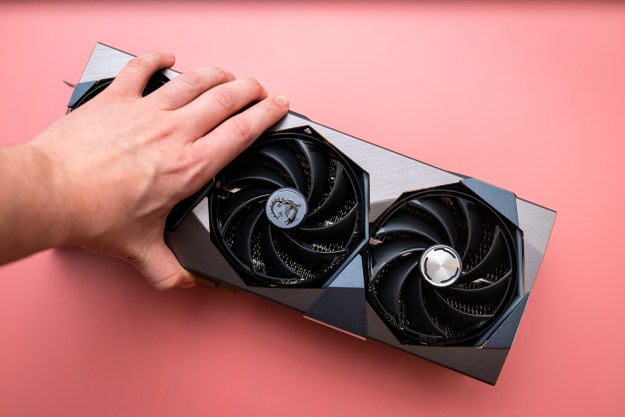Nvidia’s Graphics Technology Conference keynote just wrapped, and the two-hour-plus talk covered a lot of really interesting topics — if you’re a graphical engineer, data scientist, or autonomous vehicle enthusiast. Nvidia CEO Jensen Huang didn’t even allude to the upcoming 11-series graphics cards, or the long-rumored Turing-series cryptocurrency mining GPUs. There were a few tidbits of interest for the rest of us, like the introduction of the world’s largest GPU and a brand-new Nvidia Quadro GPU, but other than that it was mostly a technical talk aimed at enterprise customers. Let’s get into it.
Nvidia Quadro GV100

The first actual product shown off at Nvidia’s GTC keynote was the Quadro GV100, a new high-end professional-grade GPU. This thing is lightning-fast but unfortunately, it’s not for gaming so don’t get your hopes up. The GV100 is designed to power professional workstations and pump out CGI using cutting-edge real-time RTX raytracing which Nvidia first showed off at GDC. It features Nvidia’s next-gen Volta architecture and 32GB of memory, and if its predecessor, the GP100 is any indication, this card will cost more than an arm and a leg. The GP100 started at $7,000, so we can probably expect the GV100 to come in around that price.
The world’s largest GPU

Also unveiled at the GTC keynote was one of Nvidia’s most powerful — and most expensive — pieces of hardware: The Nvidia DGX-2, a GPU supercomputer that weighs in at around 350 pounds. The “mini” supercomputer features 16 individual Tesla V100 GPUs, each with 32GB of system memory. These cards all work together through Nvidia’s NVSwitch technology, meaning this massive machine is capable of crunching some serious numbers. Designed for deep-learning applications which require massive amounts of processing power, the DGX-2 is impressive, but again not for the average user. Unless you have a spare $400,000 laying around.
Clara medical imaging supercomputer

In what could be the most important announcement to come out of the GTC keynote, Nvidia briefly demoed a cloud supercomputing technology called Clara. The system could enable doctors and medical professionals working with old or outdated equipment to provide better care to patients without having to invest in multi-million-dollar imaging technology. The system, as demoed, can take the standard data output from a 15-year-old ultrasound machine, run it through its artificial intelligence models and actually infer more information than the ultrasound originally contained. During the demo, we saw Clara take a simple two-dimensional image of a heart beating and turn it into a fully three-dimensional image, complete with blood pressure estimates and other health diagnostics.
Editors' Recommendations
- AMD’s canceled GPU could have crushed Nvidia
- GPU prices are back on the rise again
- I’ve reviewed every AMD and Nvidia GPU this generation — here’s how the two companies stack up
- Nvidia and Apple are collaborating on the Vision Pro in the most unlikely way
- Meet Blackwell, Nvidia’s next-generation GPU architecture



